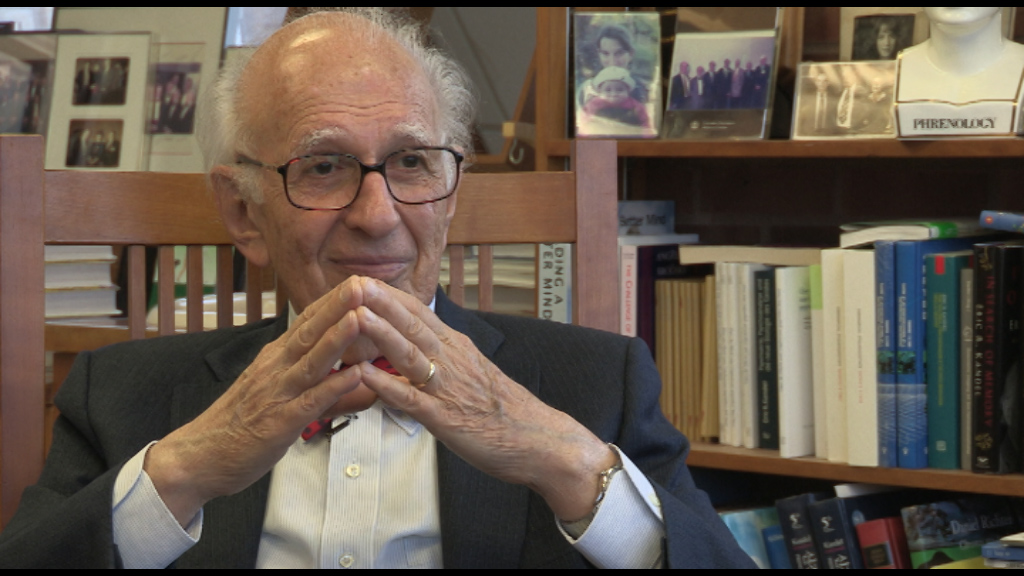NEXT STORY

Investigating the mechanisms of learning and memory
RELATED STORIES

NEXT STORY

Investigating the mechanisms of learning and memory
RELATED STORIES


|
Views | Duration | |
|---|---|---|---|
| 21. I decide to learn how memory works | 148 | 04:04 | |
| 22. Working with Alden Spencer | 97 | 02:38 | |
| 23. Thrilling discoveries about intracellular activity | 99 | 02:35 | |
| 24. Discovering Aplysia | 205 | 02:16 | |
| 25. I’m a Harvard snob! | 144 | 02:56 | |
| 26. Goldfish brains | 103 | 01:12 | |
| 27. I begin to work on Aplysia | 119 | 02:36 | |
| 28. Using Aplysia to study the neuroscience of behavior | 176 | 02:43 | |
| 29. Investigating the mechanisms of learning and memory | 137 | 04:43 | |
| 30. Working with Ladislav Tauc | 91 | 03:41 |


So the two years that I spent at Harvard in my psychiatric residency, between leaving the NIH [National Institutes of Health] and joining Ladislav Tauc in Paris, were extremely influential on many levels. To begin with, I learned a lot of psychiatry. In particular, I learned about the strengths and weaknesses of psychoanalytical approaches to it. I realized how unempirical psychiatry was and how no attempt was made to relate psychoanalytical thinking to brain science. This also was the period in which we had our first child, so it was really wonderful from that point of view. From a scientific point of view, it gave me a chance to set up my first lab, and to run experiments on the hypothalamic neurons, the neuroendocrine cells. And also it gave me a wonderful opportunity to interact with the Kuffler group.
Now one of the things that struck me about the Kuffler group that knew really an enormous amount about neurobiology, is the wonderful synthesis that Steve was able to achieve by bringing together the anatomy of the nervous system with the biochemistry of the nervous system, with the physiology of the nervous system. But one thing that really intimidated them, if I can use that word, was behavior. They thought that, number one, they didn't understand behavior, number two, they thought that brain science was not ready to tackle problems related to behavior.
And I in my naiveté thought what's so scary about behavior? If you can sit with a patient with schizophrenia, you going to be worried about the behavior of a snail or a fly or a mouse? So I had a somewhat different attitude than they did, really out of naiveté. And one thing that struck me throughout this period is that I made a number of decisions, which in retrospect seemed quite reasonable, based on rather naïve extrapolation of what could work, rather than confident deep knowledge about the subject matter. So I decided I would work on Aplysia because I realized that memory does not reside in single nerve cells, the unique properties of single nerve cells. You needed a neural circuit. So the question is: how do you then go about using Aplysia to do that?
Eric Kandel (b. 1929) is an American neuropsychiatrist. He was a recipient of the 2000 Nobel Prize in Physiology or Medicine for his research on the physiological basis of memory storage in neurons. He shared the prize with Arvid Carlsson and Paul Greengard. Kandel, who had studied psychoanalysis, wanted to understand how memory works. His mentor, Harry Grundfest, said, 'If you want to understand the brain you're going to have to take a reductionist approach, one cell at a time.' Kandel then studied the neural system of the sea slug Aplysia californica, which has large nerve cells amenable to experimental manipulation and is a member of the simplest group of animals known to be capable of learning. Kandel is a professor of biochemistry and biophysics at the College of Physicians and Surgeons at Columbia University. He is also Senior Investigator in the Howard Hughes Medical Institute. He was the founding director of the Center for Neurobiology and Behavior, which is now the Department of Neuroscience at Columbia University. Kandel's popularized account chronicling his life and research, 'In Search of Memory: The Emergence of a New Science of Mind', was awarded the 2006 Los Angeles Times Book Award for Science and Technology.
Title: Using "Aplysia" to study the neuroscience of behavior
Listeners: Christopher Sykes
Christopher Sykes is an independent documentary producer who has made a number of films about science and scientists for BBC TV, Channel Four, and PBS.
Tags: Aplysia, Stephen Kuffler
Duration: 2 minutes, 43 seconds
Date story recorded: June 2015
Date story went live: 04 May 2016